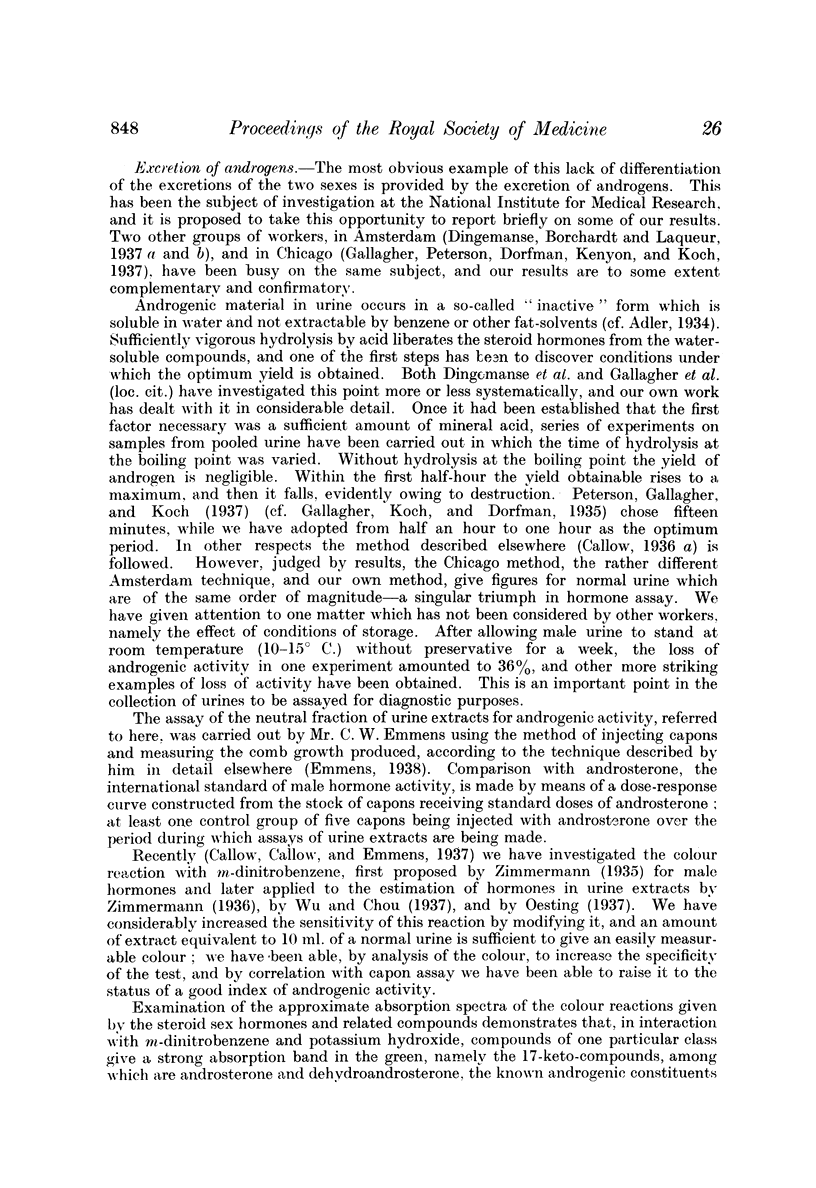Abstract
Recent work on the extraction and assay of urinary sex hormones is reviewed. The “sex hormones” known to be excreted in the urine are not identical with the hormones which have been actually isolated from the organs of secretion. Experimentally it is found that when active substances are administered only a very small proportion is excreted in recognizable form, and the excreted form may even be inactive. This general statement applies to œstrogens, androgens, progestin, and gonadotropic hormone. Hormone activity in the urine is, therefore, an uncertain index of hormonal activities in the body. However, with increasing knowledge of the chemistry and metabolism of hormones, methods of urine assay have been devised which give results capable of correlation with known or assumed physiological processes, notably in pregnancy and the normal menstrual cycle, and obvious effects are produced by certain types of tumour.
In the case of male hormone activity the lack of relation between urinary androgens and sexual condition has led to the assumption that the androgens in urine are largely derived from sources other than the gonads, probably from the adrenal glands. Work on this question is described in detail.
Full text
PDF















Selected References
These references are in PubMed. This may not be the complete list of references from this article.
- Burrows H., Cook J. W., Roe E. M., Warren F. L. Isolation of Delta-androstadiene-17-one from the urine of a man with a malignant tumour of the adrenal cortex. Biochem J. 1937 Jun;31(6):950–961. doi: 10.1042/bj0310950. [DOI] [PMC free article] [PubMed] [Google Scholar]
- Dingemanse E., Borchardt H., Laqueur E. Capon comb growth-promoting substances ("male-hormones") in human urine of males and females of varying ages. Biochem J. 1937 Apr;31(4):500–507. doi: 10.1042/bj0310500. [DOI] [PMC free article] [PubMed] [Google Scholar]
- Kenyon A. T., Gallagher T. F., Peterson D. H., Dorfman R. I., Koch F. C. THE URINARY EXCRETION OF ANDROGENIC AND ESTROGENIC SUBSTANCES IN CERTAIN ENDOCRINE STATES. STUDIES IN HYPOGONADISM, GYNECOMASTIA AND VIRILISM. J Clin Invest. 1937 Sep;16(5):705–717. doi: 10.1172/JCI100895. [DOI] [PMC free article] [PubMed] [Google Scholar]
- Odell A. D., Marrian G. F. A note on the presence in human pregnancy urine of an acid-hydrolysable combined form of pregnandiol. Biochem J. 1936 Sep;30(9):1533–1535. doi: 10.1042/bj0301533. [DOI] [PMC free article] [PubMed] [Google Scholar]


